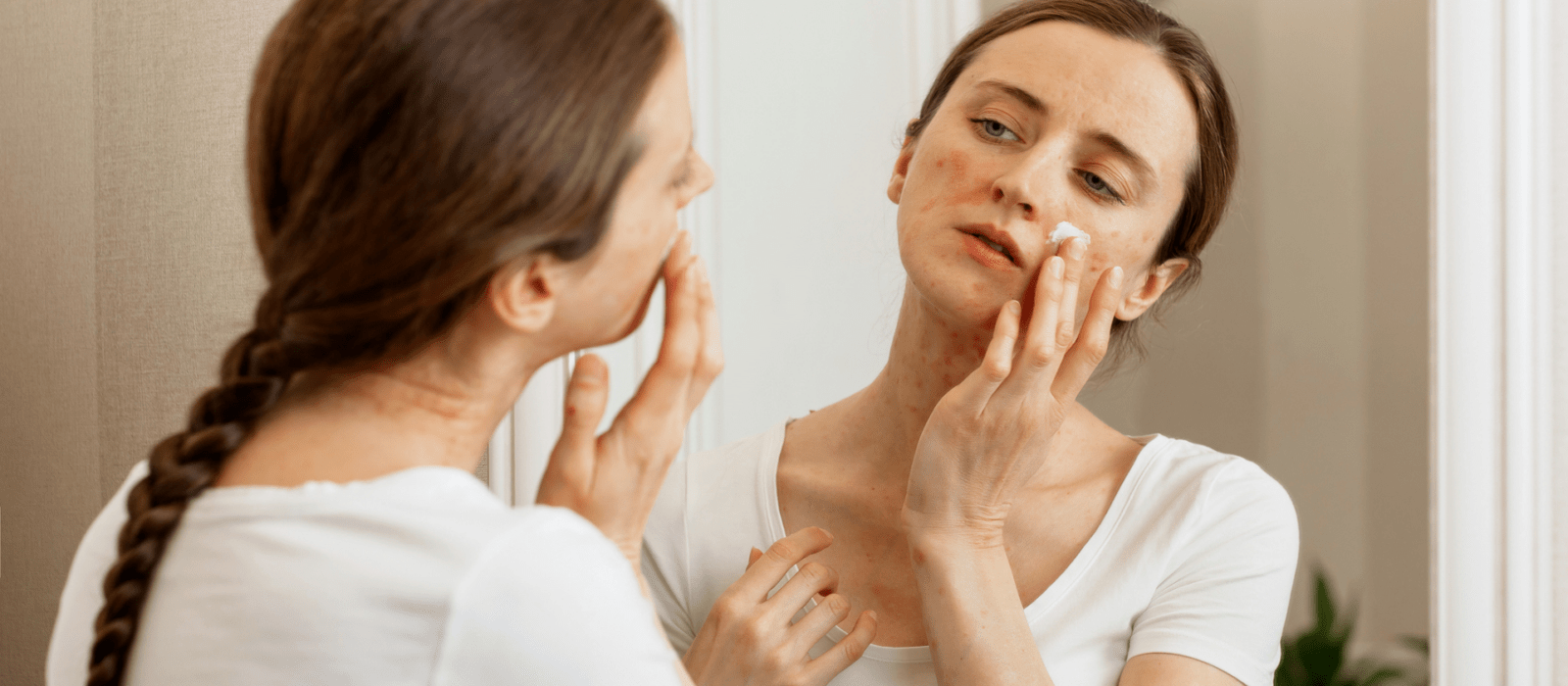About Psoriasis
Psoriasis is an autoimmune disease that causes raised, red, scaly patches to appear on the skin. Psoriasis is a chronic disease. Psoriasis is not contagious. Psoriasis can also be associated with arthritis, and less commonly with an increased risk of cardiovascular disease.
There are five types of psoriasis. The type of psoriasis will determine the most appropriate treatment.
CAUSES
Psoriasis is believed to be hereditary with at least 10 percent of the general population inheriting one or more of the genes that create a predisposition to psoriasis. However, only 2-3 percent of the population develop the disease. It is thought that both the predisposition to psoriasis plus exposure to specific external factors, known as “triggers”, causes the disease to appear.
Psoriasis triggers are not universal. What may cause one person’s psoriasis to become active, may not affect another. Known psoriasis triggers include:
- Stress
- Skin injury
- Certain medications, such as lithium, antimalarials, Inderal, Quinidine, Indomethacin, beta-blockers
- Infection
RISK FACTORS
Because of its hereditary component, people with a family history are at higher risk of developing psoriasis. In the United States, about 7.5 million people have psoriasis. Most people, about 80 percent, have plaque psoriasis.
Psoriasis can begin at any age, but most patients develop it between 15 and 30 years of age, or between 50 and 60 years of age. Caucasians are more commonly affected by psoriasis.
DIAGNOSIS
TYPES
- Plaque Psoriasis: The most common form of the disease, it appears as raised, red patches covered with silvery scale, which usually appear on the scalp, knees, elbows and lower back.
- Guttate Psoriasis: Appears as small, dot-like lesions. Often starts in childhood or young adulthood and can be triggered by a strep infection. Guttate is the second-most common type of psoriasis. Affects about 10% of psoriasis sufferers.
- Inverse Psoriasis: Appears as very red lesions in body folds, typically behind the knees, under the arms or in the groin, and it may appear smooth and shiny. It often accompanies another type of psoriasis.
- Pustular Psoriasis: Appears as white pustules or blisters surrounded by red skin. The pustules contain white blood cells, but it’s not an infection, nor is it contagious. Most commonly occurs on the hands or feet.
- Erythrodermic Psoriasis: A severe form of psoriasis. Can cause redness, severe itching, and pain over the body. Can cause skin to peel off in sheets and patients can become very sick. It’s rare, occurring only in 3% of psoriasis sufferers, and generally affects people who have unstable plaque psoriasis.
Treatment
Treating psoriasis can improve a patient’s quality of life by decreasing the appearance of plaques and the associated scaling and itch. There are many different ways to treat psoriasis. The extent of the skin involvement and the presence of arthritis will determine a patient’s appropriate therapy. It is important to keep in mind that individual patients can respond differently to certain therapies.
- Biologic Medications
- Systemic Medications
- Ultraviolet B (UVB) Phototherapy
- Excimer Laser Therapy
- Pulsed Dye Laser
- Topicals
- Complementary and Alternative Treatments
Living with psoriasis has unique challenges, but health care providers are becoming more aware of the impact psoriasis can have on a person’s quality of life. The best way to prevent flares is to avoid and treat known triggers, such as infections and specific medications.
FAQs
What is psoriasis?
Psoriasis is a skin disease that causes scaling and inflammation (pain, swelling, heat, and redness). Skin cells grow deep in the skin and slowly rise to the surface, a process called cell turnover, which normally takes a month can occur in just a few days because the cells rise too fast and pile up on the surface.
Most psoriasis causes patches of thick, red skin with silvery scales. These patches can itch or feel sore. They are often found on the elbows, knees, other parts of the legs, scalp, lower back, face, palms, and soles of the feet. Signs of psoriasis can be seen in the nails and genitals.
Who gets psoriasis?
Anyone can get psoriasis, but it occurs more often in adults. In many cases, there is a family history of psoriasis. Certain genes have been linked to the disease. Men and women get psoriasis at about the same rate.
How is psoriasis diagnosed?
Psoriasis can be hard to diagnose because it can look like other skin diseases. The doctor might need to take a biopsy, or sample, of the skin to confirm the diagnosis.
What are some promising areas of psoriasis research?
Doctors are learning more about psoriasis by studying:
- Genes
- New treatments that help calm the immune system’s response in the skin
- The association of psoriasis with other conditions such as obesity, high blood pressure, and diabetes
Visit Virginia Dermatology & Skin Cancer Center
Our team provides thoughtful, expert care for all your general, surgical and cosmetic dermatological needs. We are proud to offer the most advanced dermatological services in Norfolk, Suffolk, Newport News, and surrounding areas.

